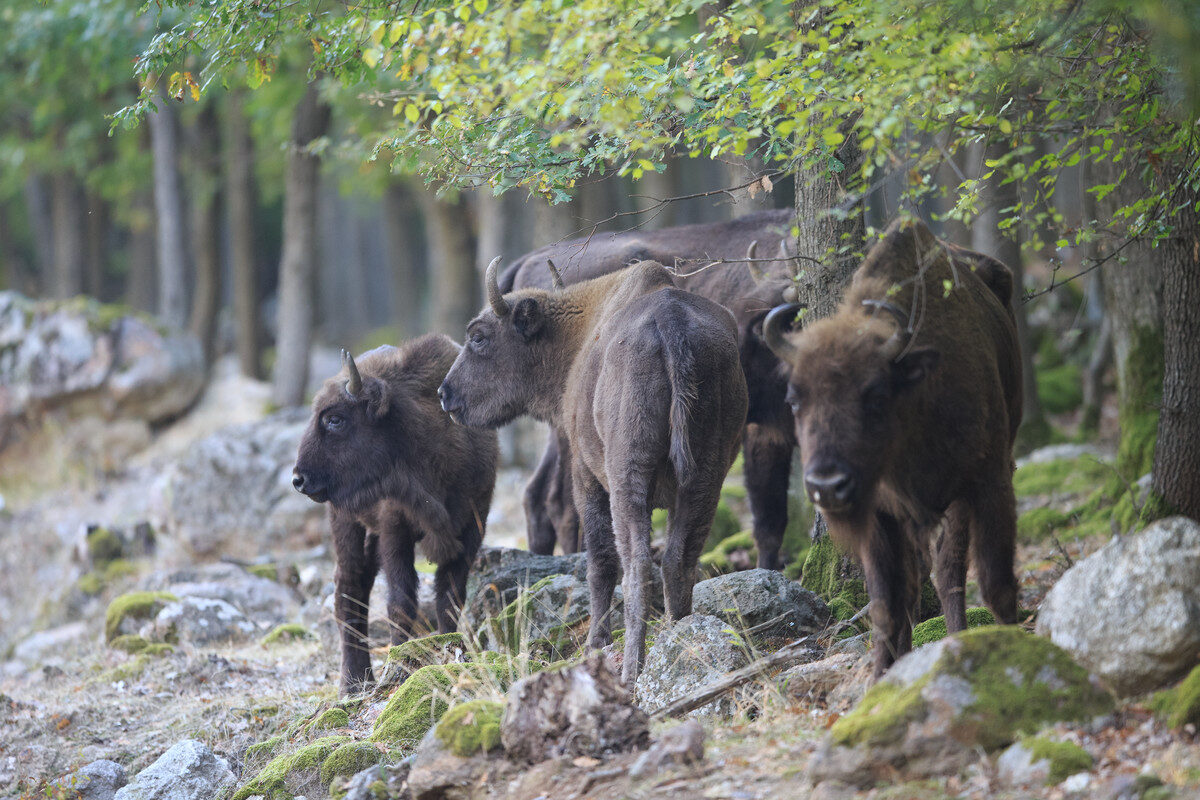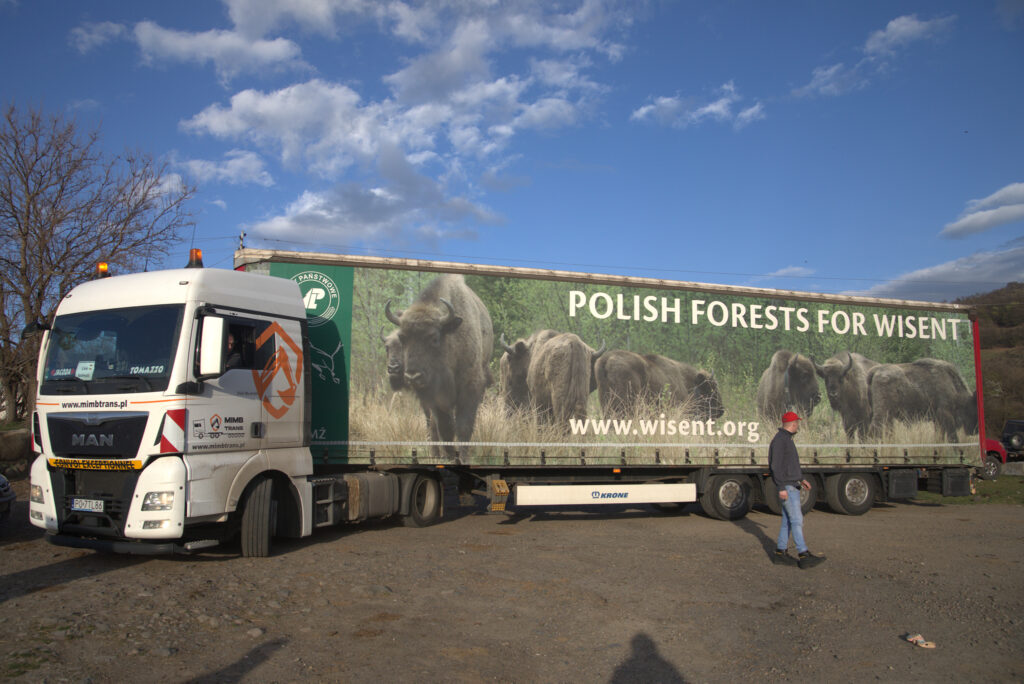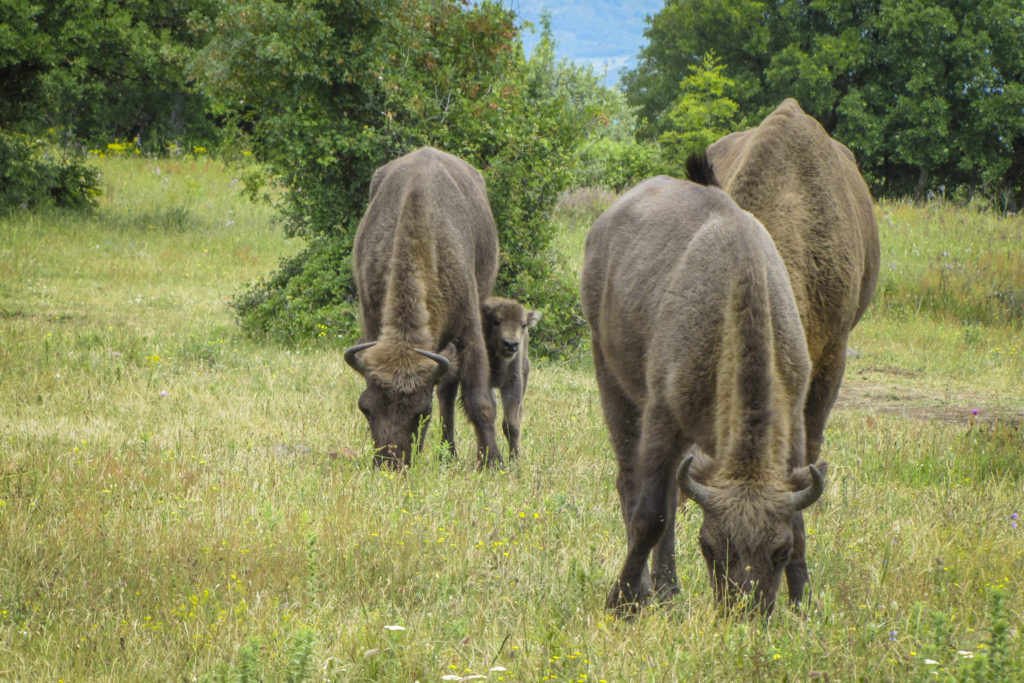Three female bison have just arrived in the Rhodope Mountains rewilding landscape in Bulgaria. They will soon join the area’s free-roaming bison herd, boosting its health and viability and positively impacting local wild nature.

Towards a wilder Rhodopes
European bison rewilding in the Rhodope Mountains of Bulgaria took another step forward at the end of last week with the arrival of three young females provided by the State Forests in Bieszczady Mountains, Poland. The animals will soon join a herd of 12 free-roaming bison in the Rhodope Mountains rewilding landscape, which has been growing since 2019, following the historic reintroduction of seven animals by the local rewilding team. This founder herd has been supplemented by further releases and the birth of new calves, which shows the entire population is acclimatising well.
The three newly arrived females will boost herd viability and increase the positive impact of the Rhodopes bison population on wild nature. European bison are a keystone species, helping to create biodiversity-rich, half-open, half-wooded landscapes through their grazing and browsing. In addition, their reintroduction in the Rhodopes is helping to enhance local food chains, which are also benefitting from the long-term release of red and fallow deer by the Rhodope Mountains rewilding team.
“The arrival of these new animals is great news for the species and great news for wild nature in the Rhodope Mountains,” says Deli Saavedra, Rewilding Europe’s Head of Landscapes. “Together with the other increasing herbivore populations in the area, the growing bison herd will increase the availability of food for scavengers, including the cinereous vultures that the rewilding team will be introducing at the end of April.”
A thriving population
Rewilding Europe has been working to restore a European bison population in Bulgaria’s Eastern Rhodope Mountains since late 2013, when the first five animals arrived at the Studen Kladenets Reserve (where they were kept enclosed until 2019) from Germany. The newly arrived females, which represent the fourth bison release in the Rhodope Mountains rewilding landscape, have been temporarily released into a fenced enclosure so that they can acclimatise to their new surroundings and the free-roaming herd nearby.
“We expect these latest animals to settle in quickly to their new home,” says Dr. Hristo Hristov, a rewilding officer with the Rewilding Rhodopes team. “The animals are well and we are closely monitoring their condition.”
With the reintroduced bison herd already multiplying, the addition of three more animals will boost the health and resilience of the population.
“Our long-term goal is to increase the number of animals and improve the genetic diversity of the herd in order to create a more robust and viable breeding group,” explains Adi Trifonova, Rhodope Mountains rewilding team leader.

Back from the brink
Once widespread across Europe, wild European bison were driven to extinction in the early twentieth century by hunting and habitat loss. Thanks to various reintroduction programmes around Europe, around 8500 European bison exist today (with nearly 7000 roaming free in the wild).
Rewilding Europe is supporting efforts to return this magnificent animal to its ancestral lands, establishing wild bison populations in the Southern Carpathians (Romania) and Rhodope Mountains and assisting with its comeback elsewhere. More information about the recovery of the European bison can be found in an impact story designed to celebrate Rewilding Europe’s tenth anniversary.
Bieszczady Mountains is home to more than 700 European bison. Activities for the protection of European bison in Poland and Europe are coordinated by a group of scientists from the SGGW Institute for Animals Sciences under the direction of Professor Wanda Olech. Тhe three bison females were sourced from a herd based in the San Valley, in the Forest Directorate of Lutowiska in Bieszczady Mountains.

The translocation is co-financed by the Arcadia Fund, the UK-based charitable trust of Lisbet Rausing and Peter Baldwin.
